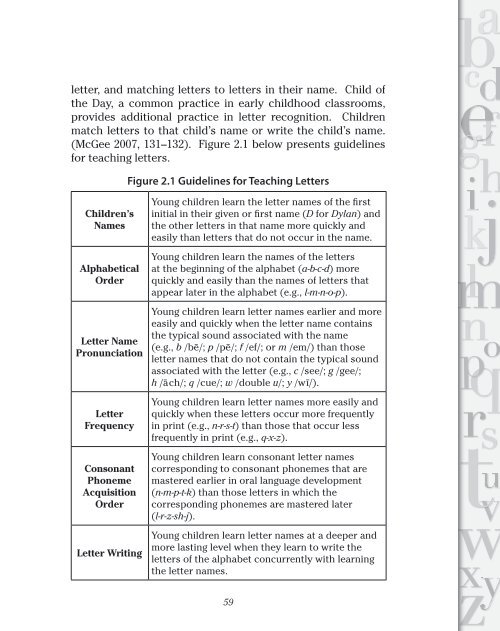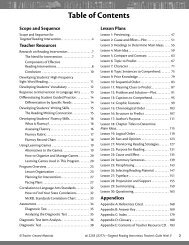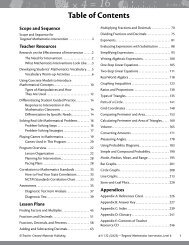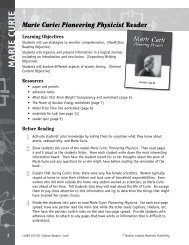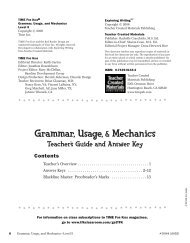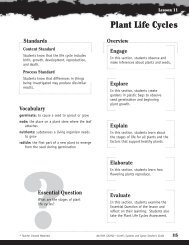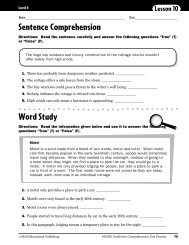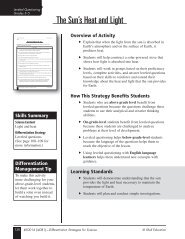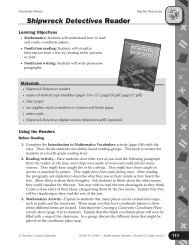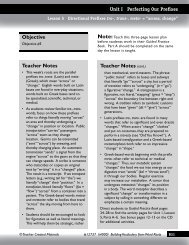Author Lesley Mandel Morrow Foreword by Ruth A. Yopp - Teacher ...
Author Lesley Mandel Morrow Foreword by Ruth A. Yopp - Teacher ...
Author Lesley Mandel Morrow Foreword by Ruth A. Yopp - Teacher ...
You also want an ePaper? Increase the reach of your titles
YUMPU automatically turns print PDFs into web optimized ePapers that Google loves.
letter, and matching letters to letters in their name. Child of<br />
the Day, a common practice in early childhood classrooms,<br />
provides additional practice in letter recognition. Children<br />
match letters to that child’s name or write the child’s name.<br />
(McGee 2007, 131–132). Figure 2.1 below presents guidelines<br />
for teaching letters.<br />
Figure 2.1 Guidelines for Teaching Letters<br />
Children’s<br />
Names<br />
Alphabetical<br />
Order<br />
Letter Name<br />
Pronunciation<br />
Letter<br />
Frequency<br />
Consonant<br />
Phoneme<br />
Acquisition<br />
Order<br />
Letter Writing<br />
Young children learn the letter names of the first<br />
initial in their given or first name (D for Dylan) and<br />
the other letters in that name more quickly and<br />
easily than letters that do not occur in the name.<br />
Young children learn the names of the letters<br />
at the beginning of the alphabet (a-b-c-d) more<br />
quickly and easily than the names of letters that<br />
appear later in the alphabet (e.g., l-m-n-o-p).<br />
Young children learn letter names earlier and more<br />
easily and quickly when the letter name contains<br />
the typical sound associated with the name<br />
(e.g., b /bē /; p /pē /; f /ef/; or m /em/) than those<br />
letter names that do not contain the typical sound<br />
associated with the letter (e.g., c /see/; g /gee/;<br />
h /ā ch/; q /cue/; w /double u/; y /wī/).<br />
Young children learn letter names more easily and<br />
quickly when these letters occur more frequently<br />
in print (e.g., n-r-s-t) than those that occur less<br />
frequently in print (e.g., q-x-z).<br />
Young children learn consonant letter names<br />
corresponding to consonant phonemes that are<br />
mastered earlier in oral language development<br />
(n-m-p-t-k) than those letters in which the<br />
corresponding phonemes are mastered later<br />
(l-r-z-sh-j).<br />
Young children learn letter names at a deeper and<br />
more lasting level when they learn to write the<br />
letters of the alphabet concurrently with learning<br />
the letter names.<br />
59


